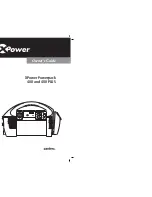
UPS5000-E-(40 kVA-320 kVA)
User Manual
7 Troubleshooting
Issue 10 (2015-09-15)
Huawei Proprietary and Confidential
Copyright © Huawei Technologies Co., Ltd.
203
7
Troubleshooting
When a UPS is faulty, alarm information is displayed on the LCD. Critical alarms must be
processed before the UPS is powered on again. Otherwise, the fault may be extended, or the
UPS may be damaged.
When batteries reach EOD, the battery switch in the BCB box trips if the BCB box is
configured. To restore battery discharge, turn on the battery switch in the BCB box (if any)
first.
To restore battery discharge after batteries reach EOD, use one of the following methods:
Switch to another battery string. Ensure that each battery has a voltage greater than the
EOD voltage and 11.3 V.
Restore the mains power supply to start the inverter. Turn on the battery switch and charge
batteries until each battery has a voltage greater than the EOD voltage and 11.3 V.
For details about how to rectify common faults, see
. If any faults that cannot be
located or solved are met, or any other unmentioned faults occur, see Alarm List and contact
Huawei technical support.
Table 7-1
Troubleshooting
No.
Case
Symptom
Possible Cause
Measure
1
The
rectifier
is
abnorma
l.
The rectifier cannot
work, and the bus
voltage is not
boosted.
The mains voltage
exceeds the upper
threshold 278 V or is
less than the lower
threshold 80 V.
Check whether the
mains voltage
exceeds the
threshold. If yes,
contact the electric
power company.
PFC soft-startup
Replace the power
















































